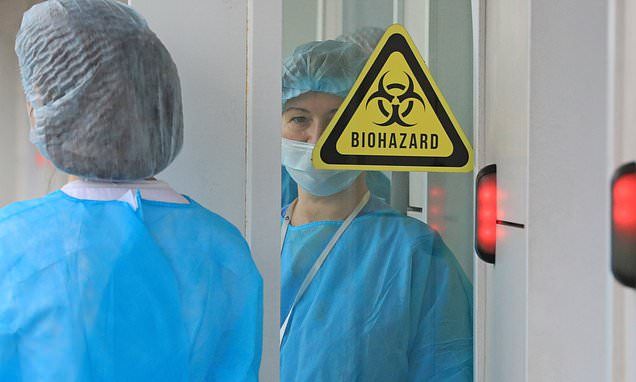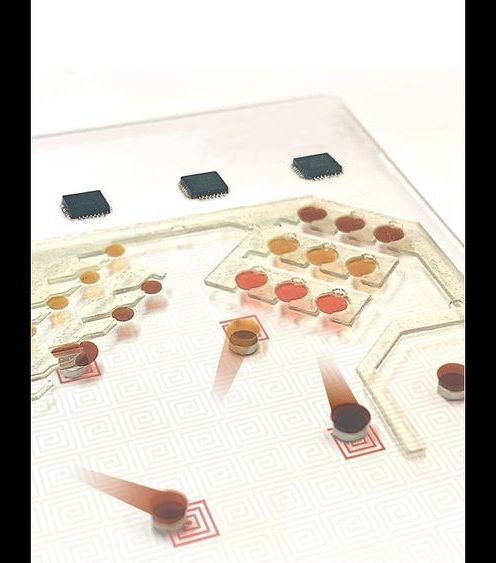Mar 5, 2020
Fungi Can Help Concrete Heal Its Own Cracks
Posted by Quinn Sena in categories: health, materials
Circa 2018
One promising candidate is eco-friendly and poses no known risks to human health.
Circa 2018
One promising candidate is eco-friendly and poses no known risks to human health.
Posthuman Daily has a new format — https://paper.li/e-1437691924
A fancy futuristic word like transhumanism has become a daily reality and technology has already expanded our limitations. Here you will find JD’s thoughts about the future of humanity.
If shit ever hits the fan it is good to have a personal library downloaded on your phone. Because your phone be worthless but a digital library will not be.
If you are trying to find prepper and survival books, you’ve come to the right place. Below is a list of 667 of the best survival manuals, books, and survival guide PDF downloads. To download any of these titles, simply right-click on a file, and then select “Save As”.

Feature image ‘Psychonaut’ courtesy of Tetramode.
Follow the Daily Grail on Facebook and on Twitter.
Continue reading “Researcher Develops a Machine to Allow Psychonauts to Explore the DMT Realm” »
Doctors in Oregon delivered the gene editing machinery behind the retina in hopes of treating an inherited form of blindness, according to the companies that developed the therapy.

Researchers in Beijing and Shanghai found the more aggressive strain appeared to have evolved from the other but has become less common since early January, with the older version returning.
A team of researchers at Brandon University has found that greater wax moth caterpillar larvae are “plastivores” that are able to consume and metabolize polyethylene. In their paper published in Proceedings of the Royal Society B, the group describes their study of the caterpillars and what they learned about them and their gut microbiome.
Prior research has shown that plastics are becoming a major pollutant. In addition to piling up in landfills, they are also broken down into microplastics, which are polluting the world’s oceans. And while there have been some attempts to curb their use, they are still produced and used in abundance in many parts of the world. Thus, scientists have been searching for a way to force such materials to degrade faster—natural degradation takes approximately 100 years. In this new effort, the researchers studied wax moths and their larvae, which are known to invade beehives to eat the honeycombs inside.
The researchers with this new effort had learned of anecdotal evidence that the larvae, which exist as caterpillars, eat low-density polyethylene. To find out if this was true, they obtained multiple caterpillars and fed them a diet of plastic grocery bags. They found that 60 of the caterpillars were able to consume approximately 30 square centimeters of the plastic in a week. They also found that the caterpillars could survive for a week eating nothing but the plastic. The researchers also studied the gut microbiomes of several of the caterpillars and identified bacteria that were involved in digesting plastic. They also allowed some of the bacteria to feast on plastic outside of the caterpillar gut and found that some of them were able to survive for up to a year eating nothing but plastic.
Devising an effective AGI value loading system should be of the utmost importance, especially when ETA of AGI is only years away. At the early stage of transition to the radically superintelligent civilization, we may use Naturalization Protocol Simulation to teach AGIs our human norms and values, and ultimately interlink with them to form the globally distributed Syntellect, civilizational superintelligence. Chances are AGIs and postbiological humans will peacefully coexist and thrive, though I doubt that we could tell which are which.

UCLA engineers have developed minuscule warehouse logistics robots that could help expedite and automate medical diagnostic technologies and other applications that move and manipulate tiny drops of fluid. The study was published in Science Robotics.
The robots are disc-shaped magnets about 2 millimeters in diameter, designed to work together to move and manipulate droplets of blood or other fluids, with precision. For example, the robots can cleave one large droplet of fluid into smaller drops that are equal in volume for consistent testing. They can also move droplets into preloaded testing trays to check for signs of disease. The research team calls these robots “ferrobots” because they are powered by magnetism.
Another important question is the extent to which continued increases in computational capacity are economically viable. The Stanford Index reports a 300,000-fold increase in capacity since 2012. But in the same month that the Report was issued, Jerome Pesenti, Facebook’s AI head, warned that “The rate of progress is not sustainable…If you look at top experiments, each year the cost is going up 10-fold. Right now, an experiment might be in seven figures but it’s not going to go to nine or 10 figures, it’s not possible, nobody can afford that.”
AI has feasted on low-hanging fruit, like search engines and board games. Now comes the hard part — distinguishing causal relationships from coincidences, making high-level decisions in the face of unfamiliar ambiguity, and matching the wisdom and commonsense that humans acquire by living in the real world. These are the capabilities that are needed in complex applications such as driverless vehicles, health care, accounting, law, and engineering.
Despite the hype, AI has had very little measurable effect on the economy. Yes, people spend a lot of time on social media and playing ultra-realistic video games. But does that boost or diminish productivity? Technology in general and AI in particular are supposed to be creating a new New Economy, where algorithms and robots do all our work for us, increasing productivity by unheard-of amounts. The reality has been the opposite. For decades, U.S. productivity grew by about 3% a year. Then, after 1970, it slowed to 1.5% a year, then 1%, now about 0.5%. Perhaps we are spending too much time on our smartphones.
